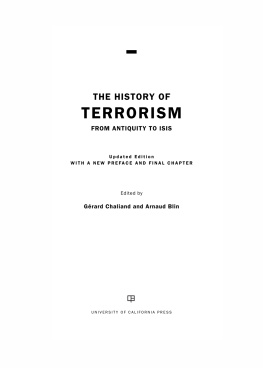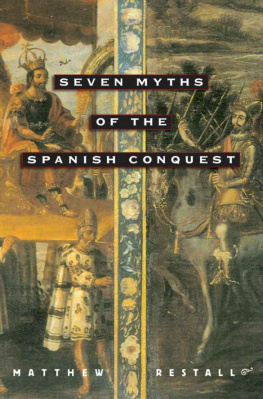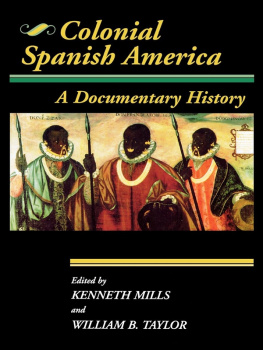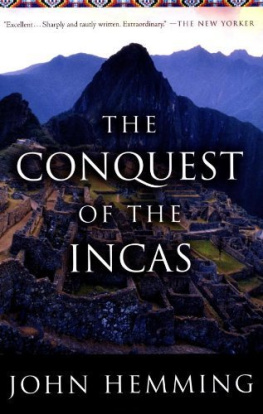Originally published in 1994 by Blue Crane Books
Published 2005 by Transaction Publishers
Published 2017 by Routledge
2 Park Square, Milton Park, Abingdon, Oxon 0X14 4RN
711 Third Avenue, New York, NY 10017, USA
Routledge is an imprint of the Taylor & Francis Group, an informa business
New material this edition copyright 2005 by Taylor & Francis
English translation copyright 1994 by Grard Chaliand
Copyright 1990 by Grard Chaliand2
All rights reserved. No part of this book may be reprinted or reproduced or utilised in any form or by any electronic, mechanical, or other means, now known or hereafter invented, including photocopying and recording, or in any information storage or retrieval system, without permission in writing from the publishers.
Notice:
Product or corporate names may be trademarks or registered trademarks, and are used only for identification and explanation without intent to infringe.
Library of Congress Catalog Number: 2004066084
Library of Congress Cataloging-in-Publication Data
Chaliand, Grard, 1934-
[Miroirs dun dsastre. English]
Mirrors of a disaster : the Spanish military conquest of America / Grard
Chaliand ; with a new introduction by the author.
p. cm.
Originally published: Watertown, Mass.: Blue Crane Books, 1994.
Includes bibliographical references and index.
ISBN 1-4128-0471-X (pbk. : alk. paper)
1. MexicoHistoryConquest, 1519-1540. 2. PeruHistory
Conquest, 1522-1548. 3. GuatemalaHistoryTo 1821. 4. Indians
History16th century. I. Title.
F1230.C513 2005
972.02dc22
2004066084
ISBN 13: 978-1-4128-0471-4 (pbk)
T HE C ONQUISTADORS M EXICO P ERU
The conquests of Mexico and Peru took place during the first part of the sixteenth century, a period when Spain was at the height of its power and glory. Christopher Columbus discovery of the continent may date back to 1492, but it was, in effect, conquered in 1521 when Heman Cortez claimed Mexico. A dozen years later, Francisco Pizarro, with unprecedented audacity, would overthrow the Incan empire of Peru.
Rarely has the notion of culture shock been as palpably illustrated as in the confrontation between the Spaniards and the Indians of Mexico and Peru. A similar phenomenon took place during the nineteenth century when newly industrialized Europe brutally invaded the Afro-Asian world.
The West today is stirred by the plight of the victims, in a similar manner to which, in the past, its people were solely preoccupied with the glory of the conquerors. Victims now tend to be considered sacred, while conquerors are demonized. These two visions are lacking in nuance, and, more importantly, are anachronistic; they judge an event from the past under present criteria. Why then not utterly condemn Aristotle for not having denounced slavery, or Plato for his very inferior vision of women in the City?
The culture shock between pre-Columbian civilizationsAztec and Inca in this caseand Spanish conquistadors could only end with the Indians defeat. This in no way lessens the remarkable exploits of Cortez, Pizarro, and their companions. Their triumphs remain exceptional, and are part of historys major military conquests, especially in Cortezs case. Had they been vanquished, another wave of conquistadors would ultimately have overcome their opponents.
The vast cultural difference, including issues of religion and technology, was too immense for the Indians to ever have had a chance at victory against the Spaniards.
Aztecs and Incas were defeated for many reasons, the main one being the global inferiority of their development. This in no way detracts from the dazzling artistic creativity of pre-Columbian civilizations, which, with no proper alphabet, created absolute masterpieces. There is no doubt that at a very initial stage, which greatly benefited the Spaniards, their arrival captivated the Aztecs, and most notably their almighty sovereign, Montezuma. The foremost vulnerability of the Aztecs was one of mind and soul. Did they first imagine that the Spanish were gods announcing the end of the world, therefore allowing the conquerors to penetrate Mexico with such ease? Or could this simply be the easiest explanation for the string of events preferred by the Indians when looking back on the past? The Aztec defeat was more than just a military collapse; it was an absolute disaster that they just could not face.
Four centuries earlier, Crusaders and Muslims met and battled for Jerusalem. Neither of these two civilizations had any self-doubt nor uncertainties regarding the superiority of one religion over another; they both considered themselves to be entirely equal. This is absolutely not the case in the conquest of America, which foreshadows the colonial era.
The three pieces of work published here give a precise reflection of the conquest of the continent, especially Mexico. From the conquerors perspective, we have at hand not only dispatches illustrating Cortezs skillful and clever strategy in conquest, but also one of the worlds most beautiful chronicles, Bernal Diazs account of events.
Born in Castile around 1495, Diaz grew up in a very modest family, and his studies were cursory at best. He arrived in Cuba at the age of approximately twenty, and immediately joined the first two expeditions to the new continent, before joining Cortez. After having taken part in the Mexico campaign, Diaz settled in Guatemala as one of its leading citizens, and, already of a certain age, undertook the writing of The Conquest of New Spain. His objective was to give Cortezs companions their rightful role in the events, a reaction to having read with indignation the publication in Spain of an account entirely focused on Cortez. It took Bernal Diaz over fifteen years to write his journal of events, which was not to be published during his lifetime, and yet it is one of the most remarkable accounts of the conquest of Mexico. His feel for narrative, his acute sense of observation, and his open mind make it what I consider one of the greatest tales of conquest and exploration related by a direct witness (all different styles of literature included).










